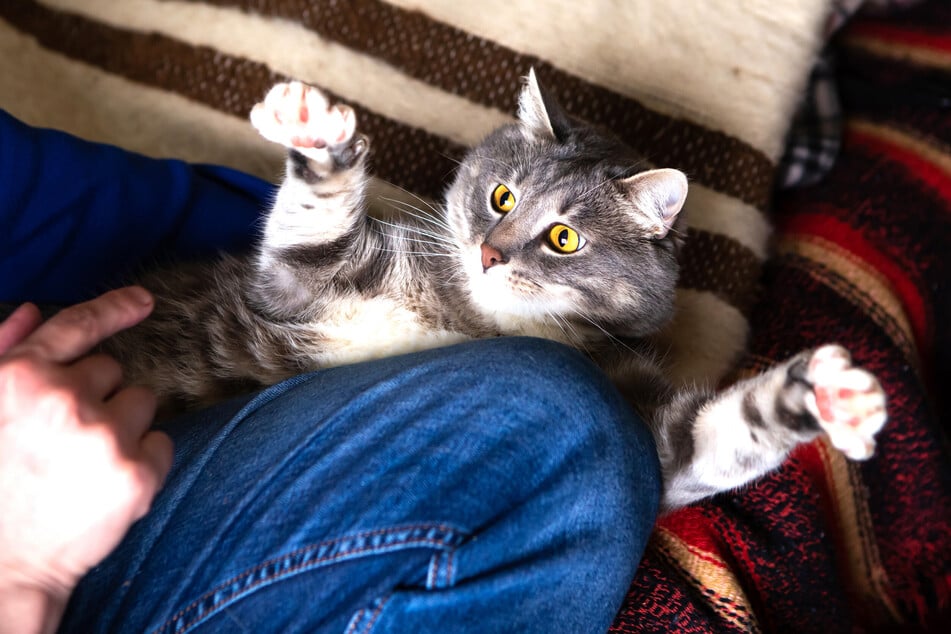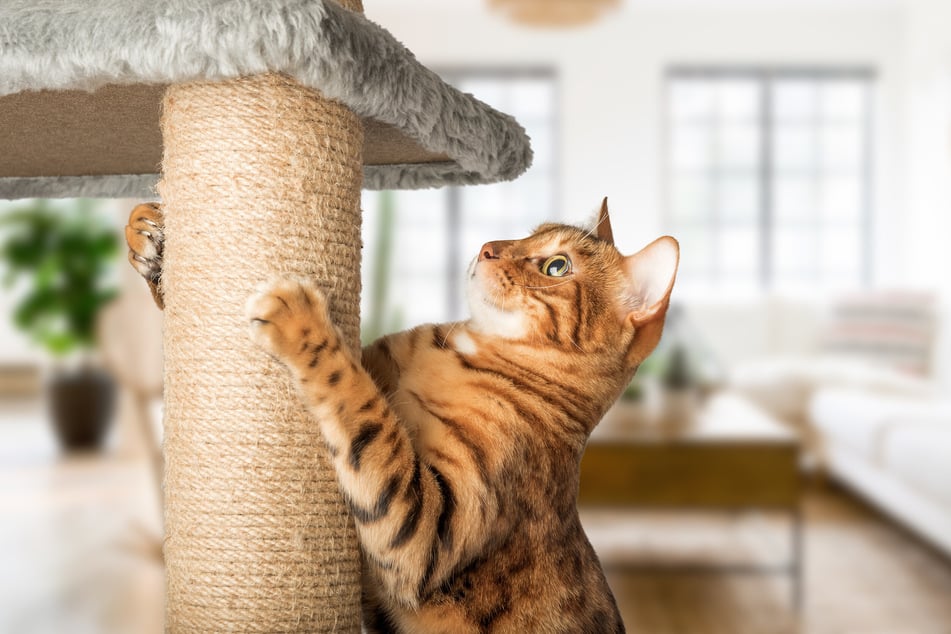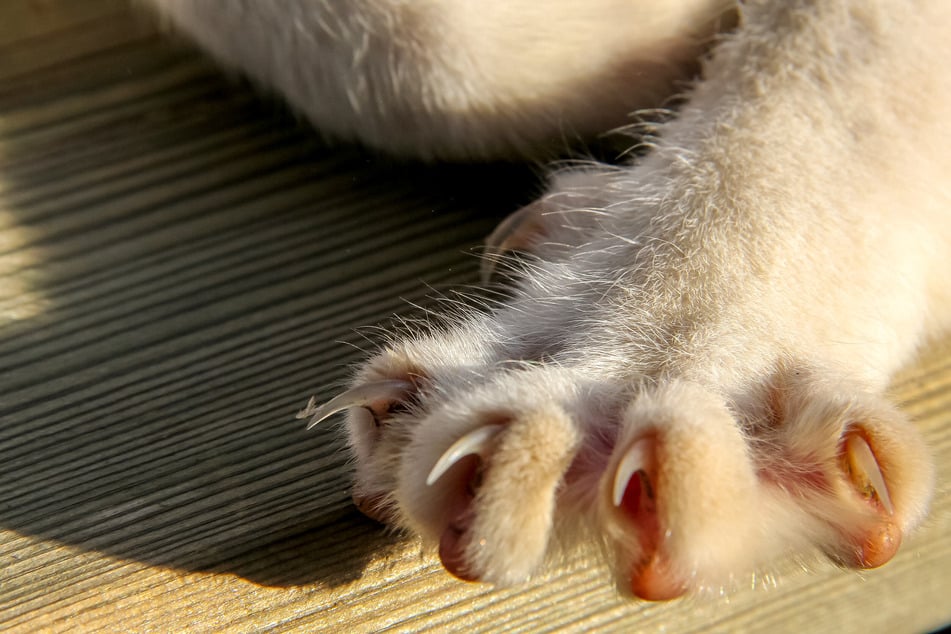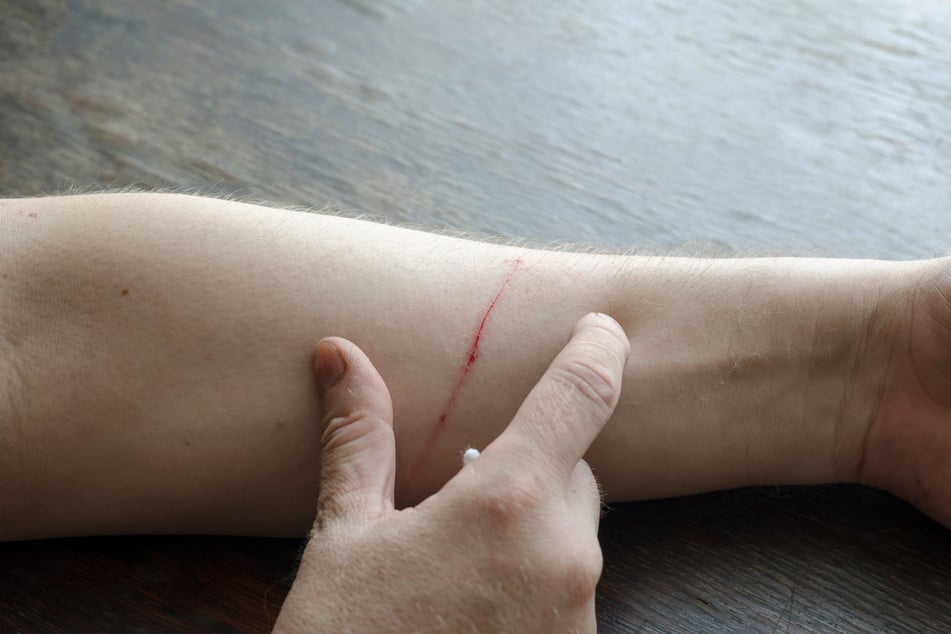Why does my cat scratch me? How to deal with and prevent cat scratches
Many cat owners are no strangers to fine red scratch marks on their arms. Is your cat constantly scratching you while playing, cuddling, or just out of nowhere? Here's what you need to do to deal with and prevent cat scratches.
- Why does my cat scratch me?
- Cat scratching while playing
- The cat could feel threatened
- Overstimulation of a cat
- The cat might be in pain
- Insufficient socialization of the cat
- How to tell if your cat is about to scratch
- My cat attacks me for no reason! What do I do?
- Redirecting cat scratching behavior: 4 tips
- How to prevent your cats from scratching you

When cuddling and playing, you occasionally get a bop from your kitty – which wouldn't be a problem if the sharp claws didn't come out as well.
Although an indoor cat has its claws retracted for most of the day, they still need to be filed and sharpened from time to time.
Scratching and biting are part of a cat's natural, instinctive behavior, and you can see that the hunting instinct of the little predators is still there when the lust to attack sparkles in their eyes.
If the cat is overconfident while playing, red scratches can quickly appear on the forearms of the person they are playing with.
So many people find that their cat scratches them. It's no wonder that people then wonder why it does this. Can and should you take action against this? Answers to these questions are given below.
Why does my cat scratch me?
Whether deliberate or accidental, there are various reasons why a house cat may attack, and you need to find out which of these apply to your own cat.
Cat scratching while playing
Kittens in particular, but also most adult cats, have a strong urge to move around and are often left with pent-up energy. If they are underchallenged, excess energy has to be released somehow.
This happens, for example, during playful fights in which cats practise their hunting behavior and slightly extend their claws. There is often no aggressive intention behind the scratching in these cases.

The cat could feel threatened
A cat may scratch its owner or other people in order to defend itself or its territory.
In the event of fear or insecurity, they often react with aggression and a paw strike with extended claws.
Overstimulation of a cat
A four-legged friend can also use unpleasant behavior to express that he is overstimulated and something is getting too much for him.
For example, if you make mistakes when petting a cat it can also lash out and scratch you while you are cuddling it.

The cat might be in pain
Behavioral abnormalities can also indicate pain and health problems, which can be triggered by skin irritations, injuries, or internal illnesses, for example.
You should keep a close eye on whether the cat's behavior has changed apart from scratching and, if in doubt, consult a vet.
Insufficient socialization of the cat
Aggressive behavior can be due to a lack of or incorrect socialization of the cat. On the one hand, kitties must not be introduced to people and other animals too late in life. On the other hand, separation from the mother and siblings too early can lead to behavioral disorders.
How to tell if your cat is about to scratch
To know when a cat is about to scratch, you should pay close attention to its body language. During playful scratching, they strike out less forcefully but more playfully. Their body does not appear tense, but rather relaxed. They may also switch between the roles of hunter and prey during play.
You can recognize a cat's aggressiveness by its ears, dilated pupils, and a tail that swings back and forth.
Keep an eye on the cat for other atypical behaviors to see if the animal may be in pain. Cat language, such as hissing or growling should also be observed.
My cat attacks me for no reason! What do I do?
If a cat attacks you for no apparent reason, stay calm and try to determine the cause of its behavior. Leave your furry friend alone for a while so that it can retreat and calm down.
It is not advisable to stop cats from scratching altogether, as it is part of the animal's natural needs and care.

Redirecting cat scratching behavior: 4 tips
Tip #1 - Offer alternatives
If you want to protect furniture, wallpaper, and yourself from a cat's claws, you should redirect the behavior and offer alternatives such as a scratching post or toys. If a cat is always a bit boisterous when playing, toys provide a safe distance between you and the claws.
Tip #2 - Train against scratching people
If a cat is often aggressive and doesn't just scratch accidentally, you can train it a little. You should correct its behavior in the moment and stop the scratching. You can, for example, put it on the scratching post until it understands.
Tip #3 - Reward positive behavior
Cats should never be punished, as this can lead to a loss of trust. It is better to reward positive and desired behavior and thus reinforce it.
Tip #4 - Ignore unwanted behavior
If possible, you can also ignore the behavior. This way, a cat is not rewarded with attention, is dissatisfied, and learns that it is unwanted behavior.
Note: Sometimes you have to get a cat used to the scratching post first before they will consistently use it!

How to prevent your cats from scratching you
In order to prevent the development of behavioral abnormalities and disorders, it is essential to keep a cat in a species-appropriate and healthy environment.
This also includes regularly challenging and playing with the cat, but it should still have a place to retreat to where it can escape to calm down.
Appropriate socialization of young cats is also very important to avoid aggressive behavior.

Conclusion:
Cats scratch for various reasons, and this behavior is not always associated with aggression – it is often simply part of their nature.
If you no longer want to be attacked by the little claws, you should redirect attention to the scratching post and the like, or reward and encourage desired behavior.
However, you should never punish a cat for scratching, as it is an instinctive and natural animal behavior.
Cover photo: 123RF/nilsjacobi
